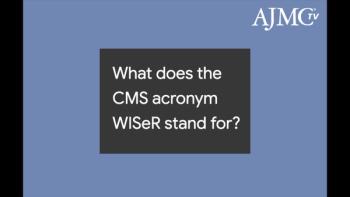
Dr William Padula Explores Applications of Cost-Effectiveness Analysis in Health Care
William Padula, PhD, MSc, MS, assistant professor of pharmaceutical and health economics, University of California Alfred E. Mann School of Pharmacy and Pharmaceutical Sciences, discusses the benefits and advancements of cost-effectiveness analysis to improve decision-making and efficiency.
The cost of care and clinical effectiveness of care should be made easy to interpret by patients and stakeholders who do not have a background in health economics, says William Padula, PhD, MSc, MS, assistant professor of pharmaceutical and health economics, University of California Alfred E. Mann School of Pharmacy and Pharmaceutical Sciences.
Transcript
Can you explain the fundamental principles underlying medical cost-effectiveness analysis (CEA), and how does it add context to value-based care?
I'm happy to. Well, I think there's no better place to start fundamentally in cost-effectiveness analysis than the
Of course, when we spend above a cost-effectiveness threshold, what we're doing is we're generating opportunity costs. We either have to make that up or accept that within a microeconomy, that maybe patient "A" gets what they need, but patient "B" will not. In the macroeconomy, if we’re spending too much on health care, we may not be able to spend on education, unemployment, or on infrastructure. And so, health care, of course, being over 20% of our GDP [gross domestic product], or at least on that trajectory, we face these risks every day. And I think cost effectiveness-analysis is an elegant, simple-to-use modeling method, to help us get at a more efficient resource allocation method for health care.
How do decision-analytic models play a role in medical CEA, and what are the key considerations when constructing these models?
Decision analytic models are the structure of doing medical cost-effectiveness analysis. Everybody has their own approach. My approach is you have to follow the patient. It's thinking through what are the clinical practice guidelines that help patients either get better or stay well? What are the different alternative treatments that need to be compared in order to come up with this identification of what is the cost of care and the clinical effectiveness of care? What are the potential opportunity costs that are either generated or conserved as a result of the ICER [incremental cost-effectiveness ratio], relative to a threshold?
I always start by following the patient through the process, relative to, let's say, some guideline comes up with a sophisticated structure of a model. That being said, our audiences are diverse in the literature. I want to make something that is as interesting and robust to a health economics audience, as it is easy to interpret and deploy to a clinical audience. Many of our stakeholders don't have a background in health economics, and so making this type of work accessible is both important and the challenge that we constantly are trying to focus on, I believe, in the
Newsletter
Stay ahead of policy, cost, and value—subscribe to AJMC for expert insights at the intersection of clinical care and health economics.















































